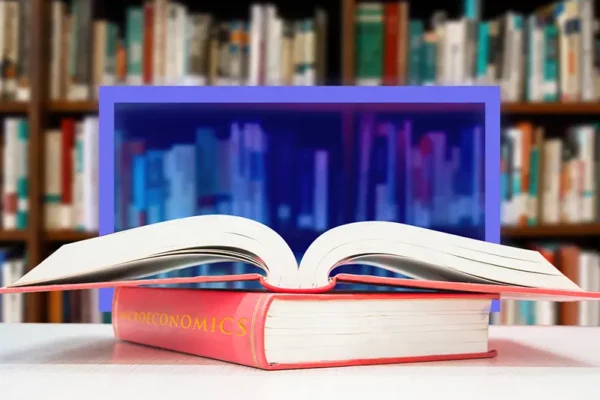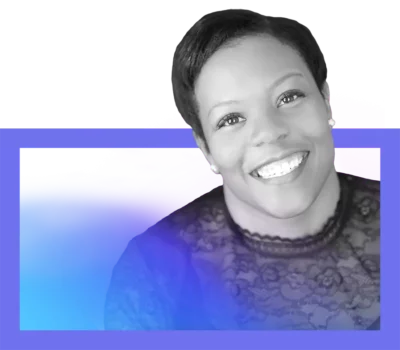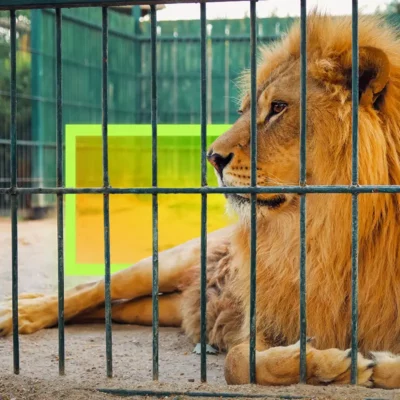Nothing beats a failure but a try
Kaya Henderson has spent a career reimagining urban education for the 21st century. But Kaya’s faith in her own potential is tested during her first semester at a top-tier school. When she falls well short of her own standards, Kaya’s exacting mother helps reframe her perspective on failure, turning what feels like the end of the road into a loving provocation to push on.


Table of Contents:
Transcript:
Nothing beats a failure but a try
KAYA HENDERSON: Every morning we meet in the hallway. And every morning we say the same three three things before leaving the house. We’re a churchy family so we start with Jesus, reciting the 23rd Psalm to invoke protection. Then grandma holds up her fist and says, “Black is beautiful.” I hold my fist up to mirror her and repeat, “Black is beautiful.” Then she says to me, “You are the smartest little girl I know. One day you could be the president of the United States.” “Well,” I say, “one day I might be the president of the United States.”
ROHAN GUNATILLAKE: Kaya Henderson is the celebrated former Chancellor of the District of Columbia Public Schools, and in her current role as CEO of education start-up Reconstruction, is reimagining what Black education looks like for the 21st century. In today’s Meditative Story, Kaya takes us back to a moment of crisis in her own education, when her mother’s exacting standards help Kaya recast her perspective on failure, turning what feels like the end of the road into a loving provocation to push on.
In this series, we combine immersive first-person stories and stunning music with the science-backed benefits of mindfulness practice. From WaitWhat and Thrive Global, this is Meditative Story. I’m Rohan, and I’ll be your guide.
The body relaxed. The body breathing. Your senses open. Your mind open. Meeting the world.
HENDERSON: I have two parents: Mom and Grandma.
Mom is the disciplinarian. She has a warm smile and is always neatly dressed, practical and respectful. No makeup, hair always neatly coiffed with a distinctive streak of gray in front. No nonsense. Pushing me all the time to do more, go bigger.
During the day she’s a school principal. Then, she sleeps for four or five hours, before getting up to work the overnight shift at the Post Office. At six in the morning she comes home, showers, and then heads back out to school for another 10 hours. They’re two grueling jobs.
Mom has a vision for me, for what she wants our lives to look like. She’s the first in her family to go to college, and the first to own a home. She sends me to Catholic school when our middle school fails to meet her standard. We take overseas trips. Not what most people are doing. We are solidly hard-working middle class.
When I ask mom why the kids at school have better clothes than I do, she tells me straight: “We are not invested in that. We’re invested in homes, school, and vacations, and experiences. There are people who choose to invest in the way they look, but there are more important things than how you look or what you have on.”
Grandma is a stickler for the way things look: Shoes shined white every morning. A full face of makeup. Stockings and girdles and undergarments – all the foundations. The whole nine. And she’s the one who buys me Guess jeans, and keeps me looking halfway fashionable. We never say a word about it to Mom.
Grandma works as a nurse’s aide at a nursing home, so every morning we’re out the door by 6:15am. I push the covers off me and dress quickly in school clothes that she laid out the night before.
Every morning we meet in the hallway. And every morning we say the same three things before leaving the house. We’re a churchy family so we start with Jesus, reciting the 23rd Psalm to invoke protection.
A placard hangs on the back of the front door featuring a televangelist named Reverend Ike that Grandma loves, smiling from ear to ear. I can’t help but feel like I’m reciting the psalm right to Reverend Ike.
Then grandma holds up her fist and says, “Black is beautiful.” I hold up my fist up to mirror her and repeat, “Black is beautiful.”
Then she says to me, “You know, you are the smartest little girl I know. One day you could be the president of the United States.”
“Well,” I say, “one day I might be the president of the United States.”
Mom is the hammer. Grandma is the grace.
Mom makes sure I’m in the right after school programs. Grandma has the experience with me, alongside me. She takes me to dance class, to UN Camp, horseback riding lessons – and everything else I do.
I grab my backpack, and she grabs her purse, and we proceed through the beaded curtains that separate the rooms, and head out into our day. Mom has the vision. Grandma shuffles me around. That’s how we get down.
I’m smart. I can be anything. I can do anything. I belong to something important. I feel connected to significant things – to history and to culture. I’ve been told this. And I internalize it.
GUNATILLAKE: This is a beautiful ritual. Kaya and her grandmother affirming their intentions for the day by connecting with who they are and what matters most. What do you need in this moment? What matters most to you?
HENDERSON: Mom often brings home what Grandma calls “strays” for dinner. Kids having trouble at school or with the law. Failing, fighting. You know, kids who come from broken homes.
Sometimes I come home from school, bouncing into the living room with our dog, Rosie, and find Mom on the couch, talking to a teenager I’ve never met but whose name, and whose story, I know all too well. Because I might need Mom to help with a homework question or I might be waiting for dinner, but she’s on the phone with Christine. And so I get to know Christine. Or at least I know about her. I know she’s been arrested. For what I’m not sure. I know Mom’s trying to help her, trying to get support from social services, being a counselor, an advocate for her.
I also know that Christine takes up a lot of Mom’s time.
Tonight Christine’s staying for dinner. Chicken. Green beans. Mashed potatoes. Rolls. Salad. And she makes an effort to connect with me. “I’ve heard so much about you, Kaya. I’ve seen your picture.” I know you did this. I know you did that.
And I nod. I’m glad she feels seen here. Safe. But I don’t really know what to say. How do I make polite conversation with someone when the only things I know about her are her challenges?
“Henderson’s like a second mother,” she says. Henderson, meaning Mom. “Henderson’s a better mother than my mother.”
Mom understands Christine, and kids like her. She has an enormous tolerance for their behavior. She’s flexible. And patient. These kids don’t have regular family dinners like we do. But mom makes them feel valuable. She gets beneath the trouble to whatever wound is expressing itself through the trouble.
“Christine is an amazing artist,” Mom tells me as we clear the plates from the kitchen table. “If someone could just tap into that part of her, she might be on a different trajectory. Just because her family is a little messed up, it doesn’t mean that she can’t contribute.”
Mom can light up young people in ways that other educators can’t. It’s one of her superpowers. And she isn’t only like this with strangers. Mom loves to have people at our house. Every Saturday she cooks and a bunch of people just kind of show up – friends, family. It’s kind of a community house. I mean how many nights have I woken up with, like, three cousins curled up next to me in bed?
So when Mom gives me a hard time about my grades, my actions, my life, I’m tempted to say, “Well, wait a minute. There’s a steady cast of characters coming through here. We’re like the second chance hotel! And you don’t hold that same standard for me. What about my second chance?”
But the rules for me are different. If and when the police ever call my house, I hope to God they reach Grandma. Because if I ever get myself into trouble like Christine’s, I’d rather be left for dead than face Mom.
So, of course, I ace high school. Captain of the cheerleading squad. President of my senior class. I’m a model kid. Georgetown is the only college I want to go to so I don’t apply anywhere else. It is the quintessential idea of what I think a college should be. From the stone gates to the campus deep inside it, ensconced far away from the city. It’s everything I’ve dreamed of in a school: Rigorous academics. Sports. Great social activities. In one of the most amazing cities I’ve ever visited: Washington, DC.
When I get here, though, there are two things that are definitely different from home. It’s overwhelmingly white and overwhelmingly rich, no two ways about it. Where I come from, I’m one of the top dogs. But those things that made me top dog in high school, these kids have here in spades. They’ve lived abroad, where I’ve merely traveled. They outshine me in every achievement. And suddenly I’m feeling very amateur league.
Mom holds me to an incredibly high standard, and I have no problem with that. I enjoy the challenge of it. I’ve never had problems in school. I’ve always achieved. But no matter how hard I work, or how much time I put in, I am, for the first time in my life, failing. And it completely messes with how I see myself.
So my first semester at Georgetown? Well, after this first report card, I’m convinced it will be my last semester at Georgetown. A, A, B, B… and F.
Microeconomics. Oof. A beast of a class.
I keep hoping that if I stare at this paper long enough, the “F” on the page will just change or just disappear. I’ve never failed anything before. And Mom is exacting about education. Education is your job in our house. You do that. That is how I pay my rent. Nothing less than a B. Ever.
All I can think about are the sacrifices mom’s made to send me to Georgetown. So failing this class makes me wonder. Am I actually who I think I am? Has everything I internalized been a fantasy? Do I really have what it takes to succeed? Do I even belong here?
In a panic, I poke my head out of my dorm room and call down the hallway to my four closest friends. My “council of elders.”
“What’s going on?” Pam asks, as the four of them file in and gather around me.
“I failed a class.”
Nyasha sighs and says, “For real? Oh well.”
“No, no, you don’t get it. You don’t know my mother. I’m outta here.”
“What do you mean, out?”
“Out. Not coming back. Plan B. Done.”
“What are you talking about, Kaya? You’re crazy. Of course you’re coming back.”
I stand up and walk over to my desk. I point at my stereo and I say, “Who wants this? Because I need to live. Pay real rent. So CDs, Speakers, clothes. Everything must go.”
It’s like a fire sale in the middle of my dorm room.
GUNATILLAKE: Imagine, visualize, being in that room with Kaya as she starts to give it all away. Her ambition and expectation meeting the reality that sometimes things don’t always work out to plan. At this point in the story, does it meet with the expectations you had up top? What are your expectations now?
HENDERSON: The next morning I decide to join the military, and by 9AM I’m at the Army Recruitment Center on 12th Street. Plan B.
“I’d like to enlist,” I say to the soldier at the front desk.
By the look on his face, I’m guessing people don’t just walk in everyday and say that, but he humors me. “Okay, tell me a little bit more.”
I tell him everything. How mom’s basically eating dog food to send me to Georgetown, and so I can’t bring home an F. And I need a plan. And he needs soldiers. So here I am.
It takes a bit of convincing, but eventually he gives me the ASVAB, the Armed Services Vocational Aptitude Battery, a multiple choice test to determine my fitness for enlistment in the U.S. Armed Forces.
I get a perfect score, and the guy looks at me like he just won the genius lottery.
“Well,” he says, ”we can have you somewhere by January. Only thing is: you are four pounds above the weight limit. Can you lose that in the next few weeks?”
“Yup. Whatever you need,” I assure him.
So he generates an acceptance letter on the spot, with orders to report on January 6.
When I come back to Harbin Hall, I summon the council and tell them my plan. They think I’m nuts. They think I should ask Mom for a second chance. The journey from Georgetown to our house in Mount Vernon, NY is literally the longest four hours of my life.
I hold two pieces of paper as I step into the familiar foyer of my childhood: my transcript and my Army acceptance letter. Typically, I would tell Grandma this kind of news first. We’d have a strategy session. That’s how we roll. But I need to own this right now.
I hand Mom the transcript before she can even get up from the dining room table. And I wait. I watch her brow furrow.
“I know I’m not back to Georgetown,” I blurt out. “But I’ve got a plan. I’m joining the Army. I’ve already said goodbye to my friends. I’m selling my stuff. I totally understand.”
Mom just sits there. Looking a little concerned.
Thoughtfully, she replies. “The F is unacceptable, Kaya. But you got As and you got Bs. So clearly you were doing your job. There’s something wrong here.”
She surveys the paper one last time.
“Did you ask anybody for help?”
Grandma has this saying: Nothing beats a failure but a try.
And I’ve never really understood it until now.
Mom’s always had high standards for me. But I never actually failed to meet them before, so driven have I been by fear. At the same time, somewhere along the way I’ve lost all perspective on what it means to succeed. My sense of success, and my sense of failure desperately need to be rightsized.
I’ve always thought outcomes are what matter most to mom. But here at this table, she’s showing me that my failure is the provocation to go back and get it right. It’s an invitation to push harder, not a warning to run away, not a final judgment.
So I take microeconomics again, but this time I get myself a tutor, I go to the professor’s office hours, and I manage to get a C. And it’s the happiest C I have ever gotten.
I thought Mom was crazy for all the attention she gave her strays. And truth be told, I was more than a little resentful. Yet, here I am.
The school I’m teaching at is just four miles from where I grew up, but the South Bronx is a world away from Westchester County. My classroom is bright and cheerful in an otherwise depressing, industrial era building, with Spanish words and phrases on the wall, a Jeopardy game on one part of the blackboard, and kids hanging out, especially during lunch and afterschool. The kids here have challenges, at home and in school. But they also have great depth and tremendous potential. Someone just needs to see them as they want to be seen. As they dream of one day being.
The kids I teach are really no different than I was, but for the advantages I had. And for attention I was given. They are bright. They are clever. They’re creative. What they lack is experience. Context. And perhaps most of all, exposure.
Most of my kids cannot see beyond this school. They don’t know anything about the world beyond the 10 block radius of their homes. There’s nothing that shows them what possibility actually looks like. It’s like picturing life through a tube. There’s no aperture.
That’s when I realize what Mom has been about all of these years, widening the horizon so that I could see more, and building resilience in me so that when failure finally does come, I see it not as the end of the road, but rather the moment to turn and try again with the wider view.
I think back on the strays she brought home and fed at our kitchen table, how distant I felt from them. I only saw what they did. I couldn’t see who they were.
But I get it now. When I see a student struggling, I zero in on their potential. It’s never about sympathy or pity. Mom drilled into me that we all need to carry our own weight. It’s just a matter of figuring out how to move these kids forward, and how to equip them to turn, when where they’re headed isn’t working for them.
Times have changed. I can’t bring kids home for dinner like she did. But I can spend lunchtime with them. I can listen. I can stay after school with anybody heading home to an empty house.
Their grades – the outcome – that’s part of it, sure. But the connection? That matters so much more. When you tap into someone’s value, they perform better. You center them at the fixed point in a spinning world. And so they run faster. They climb higher. They try. And that makes all the difference.
Rohan’s closing meditation
GUNATILLAKE: I remember my first ever meditation class. I’d wandered in off the street and thought why not, I’ll give it a go?
And as the teacher was giving the instructions on following the breath, I spent the whole time with my attention jumping from place to place, witness for the first time really, of just how chaotic my inner life was. I thought I was a failure. That I couldn’t do this meditation thing, that it wasn’t for me. Even an F might have been generous.
But when I spoke to the teacher afterwards, he told me that was the point. How could I expect to be good at something I’d never done before? And in any case, being good wasn’t about being calm or steady, it was about being open and curious about what was happening. So I stuck around and now, 17 years later, I’m here.
So let’s practice failing. That’s sort of what meditation is. You practice failing and being OK with it and over time you notice how all these wonderful qualities grow in you along the way. It’s not a classical definition, but it’s pretty good.
And we’ll do it in a traditional way. With breathing. Giving our breath the attention it deserves. Hanging out with it. Becoming better friends with it. In this meditation, we’re going to make the intention to pay attention to the breath and just see what happens. There is no right way for the breath to be – deep breaths are not better than shallow ones. A calming breath is not necessarily better than a frantic one.
What is important is that you are able to connect with the breath, know what it feels like and learn how to rest with it. However your body is. Committing this short time together. Let’s just take a moment to notice where in the body you can feel the breath most prominently, taking care not to force it.
You are most likely to feel the breath either in your belly, your chest or around the nose. Feeling the gentle rising and falling of your belly, filling up like a balloon as you breathe in. And deflating down as you breathe out. Or feeling the lifting of the rib cage and the chest with the in-breath. And its gentle return on the out-breath.
Or if you prefer, you can feel the more subtle sensations around the nose. The coolness of the air as you breathe in. And the slightly warmer feeling as you breath out.
None of these three locations is any better than the other, the most important thing is to pay attention to the breath where you feel most comfortable. And if you’re not quite able to connect at all, just use a simple meditation hack, if it’s OK, by placing a hand on your belly and use that rising and falling sensation instead.
Now, connecting with the breath. In whatever way feels best. Just resting your attention there. Resting on the breath just as you’d rest on a park bench on a long summer’s day. Hanging out with the breath, your mind in time with the movement. Gentle and without tension.
We are not looking to change the breath in any way. This is not a breath control exercise, it is a breath awareness exercise. Training the mind to become more familiar with this process that keeps us alive.
And of course our mind will wander, run around, be bombarded with thoughts. That’s not a problem, it’s normal, it’s to be expected actually. And when that does happen, just use your memory of the connection to bring your attention back to the breath. Resting the mind with the breath.
Uniting the mind with the breath in this way has many benefits, and with practice you can build your ability to be calm and steady. Allowing the mind to rest with the breath builds our ability to keep our attention just in one place – a skill that never goes out of fashion.
So locating the breath. Resting with the breath. And bringing it back when it wanders off.
That’s it.
That’s all.
Resting the mind on the breath wherever it feels most comfortable. And bringing it back when it’s wandered off.
That’s it.
That’s all.
Your story of this meditation is probably one of failure. The mind wandering, maybe even some confusion. But you know it’s the interest, the energy, the coming back again and again that really matters. So when the wise old teacher says there is no bad meditation, just wrong expectation, they’re probably right.
Thanks Kaya. Thank you. And go well.





